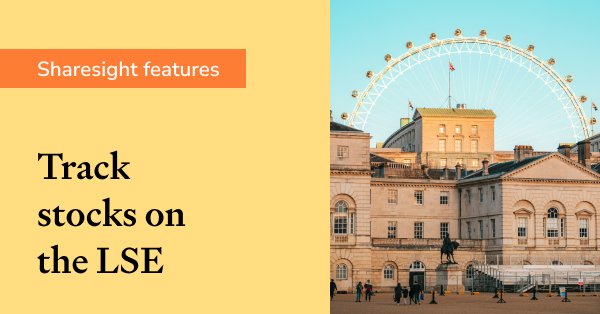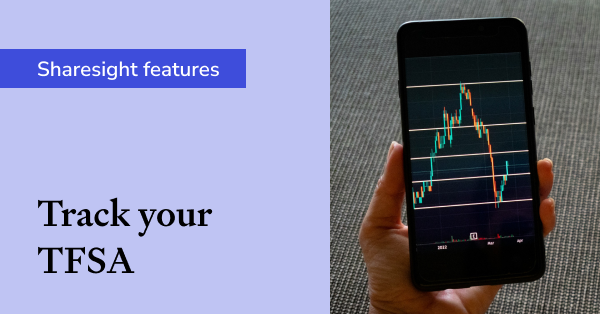5 things you need to know before you set up an SMSF
Disclaimer: The below article is for informational purposes only and does not constitute a product recommendation, or taxation or financial advice and should not be relied upon as such. Please check with your adviser or accountant to obtain the correct advice for your situation.
If you’re considering establishing a self-managed super fund (SMSF) to take more control over how your superannuation savings are invested for your retirement, you should know these 5 important things before diving in.

Firstly, what is an SMSF?
Today the Australian superannuation regime is a compulsory system set up for the benefit of employees which can only be accessed in retirement. The compulsory aspect was introduced in 1991, coming into full effect in 1992, including legislation known as the Superannuation Guarantee. This enforced compulsory contributions, currently a minimum contribution of 9.5% of an employee's income, which is paid into your choice of super fund.
These funds can be separated into two main segments, traditional and Self Managed Superannuation Funds (or SMSFs). There is no single best type of fund as each appeal to different investors for their specific advantages and features. Generally, traditional funds are much easier to manage and require much less time, but often lack the flexibility and complete control that SMSFs provide.
SMSF is set up by members who also act as the trustees. The trustees run the fund with the sole purpose to benefit themselves, managing all aspects of the fund's operations from its investment strategy to administration, tax and legal requirements. A summary of the main difference between SMSFs and traditional funds are outlined below:
| SMSFs | Traditional Funds | |
| Control over investment strategy & selection | Full control | Limited control |
| Control of when to buy & sell investments | Full control | Limited control |
| Responsibility for compliance | You (or your trustee) is personally responsible | Superfund trustee is responsible |
| Regulators | ATO | Australian Prudential Regulation Authority (APRA) |
| Time requirements | Very time consuming | Not time consuming |
| Management and administration costs | Flat fees for platforms like Sharesight Percentage fees on investment wraps/platforms | Usually a percentage of total funds under management Due to scale, cost of administration typically lower per member |
A more detailed comparison can be found on the ATO’s website or visit the ASIC’s Money Smart website for a brief overview of each of the types of super funds.
SMSFs account for approximately one quarter (28%) of all super assets (however, only contain 3.8% of super fund members), and as of March 2019 alone totalled approximately $750 billion in assets. SMSF’s have quickly grown in popularity, having a 5% growth rate per year for the past five years, consisting of over 591,000 funds with a total of 1.1 million members.
With the basics of SMSFs out of the way, here's 5 things you'll need to know before you choose to set one up.
SMSF professional advice comes in many forms
There are several types of professional advisors for SMSFs who may be of benefit, in both the establishment and ongoing management of your SMSF.
During establishment, the main advisors to SMSFs are:
-
A financial advisor for the preparation of investment strategies, advice on different investment products and insurance products. -
An accountant to set up financial systems and to prepare the SMSFs accounts and operating statements. -
A fund administrator for establishment and ongoing operations of your SMSF to meet reporting and administrative obligations. -
A legal partitioner when preparing or updating your fund’s trust deed.
Post-establishment
-
An [approved SMSF auditor](https://asic.gov.au/for-finance-professionals/self-managed-superannuation-fund-smsf-auditors/) to audit the fund. -
A tax agent to help complete and lodge annual return and provide taxation advice.
SMSFs can have either Individual Trustees or Corporate Trustees
When establishing your SMSF, you can choose either an individual or corporate trust structure. Both allow up to four trustees, each having advantages and disadvantages, the main differences being:
-
Member and trustee requirements -
Costs -
Ownership of fund assets -
Separation of assets -
Penalties -
Succession
During an SMSFs establishment, trustees (individual trust) or directors (corporate trust) must be appointed under the fund’s trust deed. These appointed trustees or directors are equally responsible for the day-to-day operations, management and decisions of the SMSF. Other professionals can also be selected to help with the management of the SMSF, such as an accountant, financial planner or tax agent. However, the ultimate responsibility and accountability of the SMSF’s actions solely lies with the trustees and directors.
The SMSF trust & trust deed are key
To establish an SMSF, a trust is set up to hold assets for the sole benefit of the beneficiaries for retirement. A superfund is a unique type of trust, enabling its trustees to personally manage their funds contained within the trust, unlike a regular trust structure where money must be managed by someone other than the trustee.
-
Have at least one trustee or director -
Adheir with its governing rules (trust deed) -
Hold at least one asset or investment -
Contain legally identifiable beneficiaries
A trust deed is a legal document outlining the governing rules for the establishment and operation of an SMSF. A trust deed typically includes:
-
The fund’s objectives -
List of all members and trustees -
How trustees or directors be appointed or removed -
Outlines when contributions can be made -
States whether benefits can be paid as lump sums or income streams -
When and how professional advisors can be appointed -
The ‘winding up’ procedure
Therefore it is vital that SMSF trustees fully consider all decisions and subsequent implications when creating both a SMSF trust and trust deed and how it will impact the ongoing operations of the fund.
SMSFs need to be registered with the ATO
To fully comply with ATO regulations and be eligible to receive tax concessions, an SMSF needs to be registered as an Australian super fund at all times throughout the financial year. If an SMSF stops being an Australian super fund and does not meet all residency conditions , it will become non-compliant, and as a result, its income will be taxed at the highest marginal tax rate.
To be classified as an Australian super fund, the SMSF must comply with the following residency rules:
-
Be established in Australia, or hold at least one investment located within Australia.
-
The central management and control of the fund ordinarily resides in Australia.
-
Have either no active members or contain active trustees who are Australian residents and hold at least 50% of the total amount payable to active members if they decide to leave the fund.
SMSFs need an ABN, bank account & electronic service address
SMSFs can’t be run using personal bank accounts or credit cards. Instead, trustees need to establish the following in the name of your SMSF in order to administer the fund:
ABN
Once your SMSF has been established with all trustees/directors appointed, the ATO allows a maximum of 60 days to officially register your SMSF. Registering is completed by applying for an Australian Business Number (ABN) through the ATO.
Bank account
A bank account in the SMSF’s name is required to accept contributions, rollovers of super and where income from investments will be paid. This account is also used to pay the fund’s expenses and liabilities. However, the fund's bank account must be kept separate to each of the individual trustees’ accounts or any related personal accounts.
For funds with two to four members, a single account is still able to be used, however a separate record of their entitlement is required, which is called a ‘member account’. The account will show:
-
The contributions made by each member -
Fund investment earning allocations -
Individual member payments of super benefits
Electronic service address
Creating an electronic service address requires both the SMSF’s ABN and bank account details to be created beforehand. This address allows your SMSF to receive contributions from employers via SuperStream electronically. SuperStream data is the way businesses can make employee super contributions , where the money and data are sent electronically in a standardised form.
SMSFs need an exit strategy
When establishing an SMSF trustee need to consider what happens to the fund when it ends or ‘winds up’. This is an essential step due to unanticipated events arising that may make your SMSF unmanageable. The three most common reasons to wind up are:
-
A relationship breakdown -
An illness or accident that leaves a trustee incapacitated -
The death of a trustee
In the event of such circumstances, having an exit strategy may reduce the impact of these unexpected events. The main things to consider when creating an exit strategy are:
-
Ensuring that all trustees have access to SMSF records and electronic accounts. -
Including specific rules in the trust’s fund deed which are triggered by events, such as the ones listed above, that may lead to the fund becoming unmanageable. -
Having all members make binding death benefit nominations -
Appointing an enduring power of attorney for each member -
Including the likely costs involved with winding up an SMSF
Manage your SMSF with Sharesight
Sharesight is part of the ‘unbundled’ SMSF solution and is built for the needs of SMSF investors like you, with Sharesight you can:
-
Get the true picture of your investment performance, including the impact of brokerage fees, dividends, and capital gains with Sharesight’s annualised performance calculation methodology
-
Sharesight automatically tracks your daily price & currency fluctuations, as well as handles corporate actions such as dividends and share splits
-
Run powerful tax reports built for Australian investors, including Capital Gains Tax, Unrealised Capital Gains, and Taxable Income
Sign up for a FREE Sharesight account and get started tracking your investments today.
FURTHER READING

Track stocks on the London Stock Exchange with Sharesight
With Sharesight, you can automatically track the price and performance of thousands of stocks and ETFs on the London Stock Exchange (LSE).

Track your TFSA with Sharesight
You can easily track your Tax-Free Savings Accounts (TFSAs) in Sharesight, in addition to your non-registered, RRSP, and RRIF accounts.

Top 50 finance and investing podcasts in 2024
The Sharesight team has put together a list of the top 50 investing, personal finance and business news podcasts worldwide.